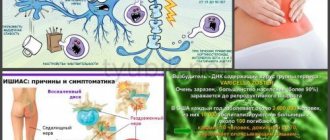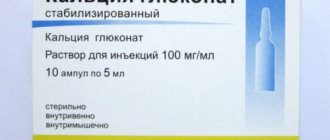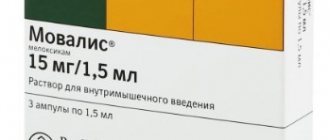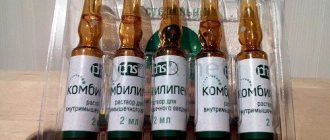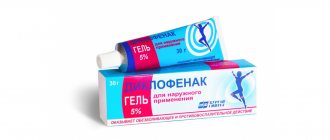Compound
The composition of Milgamma in the form of a solution for intramuscular administration includes several active substances. In particular, the ampoules contain: pyridoxine hydrochloride , thiamine hydrochloride , cyanocobalamin and lidocaine hydrochloride .
Also, Milgamma injections contain additional substances: benzyl alcohol, potassium hexacyanoferrate, sodium hydroxide, sodium polyphosphate, water for injection.
Vitamins in tablets contain benfotiamine , pyridoxine hydrochloride , and also contain anhydrous colloidal silicon dioxide, croscarmellose sodium, microcrystalline cellulose, talc, povidone K30, and partial long-chain glycerides.
Substitutes
There are many medications that can replace Milgamma. They contain the B group of vitamins and are similar in structure. But before using an analogue, you need to visit a doctor, since not all medicines contain active substances in full and can fully replace the original. If, instead of Milgamma, you take a set of vitamins along with lidocaine, then you need to strictly follow the rules for administering the drugs to ensure the desired therapeutic effect. The list of Milgamma analogues is large, there are drugs that are used most often.
Release form
The medicine is available in the form of a solution (Milgamma injections for intramuscular administration), as well as in the form of tablets and dragees.
- Vitamins in the form of a solution are contained in 2 ml ampoules. The ampoules are made of brown hydrolytic glass, each of them has a label and a white dot. The package contains 5 or 10 ampoules.
- Film-coated tablets are packaged in 30 or 60 pcs.
- Milgamma Compositum pellets are also produced - biconvex, round in shape, white. The dragee is contained in a blister pack of 15 pieces. There may be 2 or 4 blisters in a cardboard pack.
pharmachologic effect
The drug Milgamma contains neurotropic vitamins, which belong to group B. The drug is used in a therapeutic dose for diseases of the nerves and nervous tissue, in which patients have impaired nerve conduction or inflammatory-degenerative phenomena.
The drug Milgamma is also prescribed to people with diseases of the musculoskeletal system. The use of a drug containing large doses of vitamin B relieves sharp pain, activates microcirculation processes, improves hematopoiesis and the functioning of the nervous system.
Vitamin B1 (thiamine), entering the body, is converted through phosphorylation into cocarboxylase and thiamine triphosphate. In turn, cocarboxylase takes part in the processes of carbohydrate metabolism, normalizing the functions of nervous tissue and nerves and improving conductivity in the nerves. If there is a deficiency of vitamin B1 in the body, then under-oxidized products of carbohydrate metabolism can accumulate in the tissues, provoking a variety of pathological conditions.
When determining which is better - Milgamma injections or tablets, it should be taken into account that instead of thiamine chloride, the tablets contain benfotiamine, a fat-soluble derivative of thiamine.
Vitamin B6 (pyridoxine) gets phosphorylated when it enters the body. The products of its metabolism are involved in the decarboxylation of amino acids, as a result of which physiologically active mediators are produced in the body - adrenaline , histamine , tyramine , dopamine , serotonin . In addition, vitamin B6 affects tryptophan .
Vitamins B1 and B6 provide potentiation of each other’s influence, therefore Milgamma vitamins in injections and tablets have a pronounced beneficial effect on the health of patients with diseases of the nerves and musculoskeletal system.
Vitamin B12 (cyanocobalamin) has an antianemic effect, activates the synthesis of nucleic acids, choline, creatinine, methionine. Takes part in metabolic processes in cells. The substance reduces pain resulting from damage to the peripheral nervous system and activates nucleic acid metabolism.
Lidocaine has a local anesthetic effect.
Combilipen
This drug is another analogue of the Russian-made drug Milgamma compositum. It is produced in the form of parenteral solutions for injection. This medicine contains all active ingredients similar to Vitagam, however, their concentration is reduced by half. On top of that, one of the active ingredients is lidocaine hydrochloride.
In most cases, Combilipen is used in the development of diseases associated with damage to the nervous system:
- polyneuropathy;
- neuralgia of peripheral nerves;
- pain syndromes when osteochondrosis occurs due to compression of peripheral nerves.
Contraindications to the use of the drug are:
- pregnancy and lactation;
- myocardial hypertrophy in combination with heart failure.
This drug is the most popular analogue of Milgamma in injections.
Table - existing forms of the drug Combilipen with prices *
| Name | Manufacturer | Active substance | Price |
| KOMBILIPEN TABS N60 TABL P/PLEN/COACH | Pharmstandard-Ufa Vitamin Plant, JSC | Lidocaine | 472.90 RUR |
| KOMBILIPEN TABS N30 TABLE P/PLEN/COACH | Pharmstandard-Ufa Vitamin Plant, JSC | Pyridoxine | 274.20 RUR |
| KOMBILIPEN 2ML N10 AMP RR V/M | Pharmstandard-Ufa Vitamin Plant, JSC | Thiamine | 223.60 RUR |
| KOMBILIPEN 2ML N5 AMP RR V/M | Pharmstandard-Ufa Vitamin Plant, JSC | Cyanocobalamin | 149.20 RUR |
Milgamma or Combilipen, which is better?
Combilipen and Milgamma are able to relieve the patient of problems with the central nervous system in a short time. Both drugs have a completely similar composition and are prescribed in complex treatment, but despite this they still have a number of differences.
Combilipen tablets contain three active substances (thiamine, pyridoxine, cobalamin), while Milgamma has only two (thiamine and pyridoxine). The remaining forms have identical compositions.
The injection form contains lidocaine, so before using it, make sure that you have no contraindications to this component.
Despite their similarity, the drugs have slight differences in their areas of application. For example, Milgamma is prescribed for neuritis, radicular syndrome, neuralgia of various origins, and Combilipen for ternary nerve neuralgia, polyneuropathy, as well as for patients with diabetes and alcohol abusers.
If we compare drugs by price, then Combilipen, in all forms, is much cheaper than Milgamma. For example, for the first, a package of solution for injections with ten ampoules of two milliliters each costs an average of 250 rubles, for the second it will cost 409 rubles.
To summarize, it can be noted that despite the similarity of the drugs, some forms have their differences, but otherwise the drugs are absolutely the same. As for the price, it is clearly more profitable to buy Combilipen, which is much cheaper than Milgamma .
Pharmacokinetics and pharmacodynamics
The abstract indicates that after intramuscular injection, thiamine is quickly absorbed and enters the blood. It is distributed unevenly in the body. Since there are no significant reserves of thiamine in the body, it must be supplied every day. The substance can penetrate the blood-brain and placental barriers. Excreted through the kidneys. Thiamine, compared to other vitamins, is stored in the body in the smallest quantities.
Pyridoxine , after the solution has been injected intramuscularly, quickly enters the bloodstream and is distributed throughout the body. Approximately 80% of the vitamin is bound to plasma proteins. The substance is able to penetrate the placenta and enters breast milk. Later it is oxidized to 4-pyridoxic acid, which is excreted through the kidneys after 2-5 hours.
Cyanocobalamin , entering the human blood, binds to proteins, resulting in the formation of a transport complex. Then, in this form, it is absorbed by the liver tissue. It also accumulates in the bone marrow. After cyanocobalamin is excreted into the intestines with bile, it can be reabsorbed.
Binavit
Binavit is available in injections for injection into the muscle, the therapeutic effect of which is explained by vitamins B1, B6, B 12 and lidocaine.
In addition to them, the medicine contains the following inactive substances:
- Water.
- E1519.
- E452.
- E524.
- E536.
The injection solution is a clear red liquid with a specific odor.
B vitamins have a positive effect in inflammatory and degenerative pathologies of the nervous and musculoskeletal systems.
Vitamin B1 or thiamine is necessary for proper carbohydrate metabolism; it takes part in the Krebs cycle and in the transmission of nerve signals.
Vitamin B6 or pyridoxine is important for the metabolism of proteins, fats and carbohydrates, the normal functioning of the peripheral and central nervous system, hematopoiesis, the biosynthesis of catecholamines, and the transmission of nerve impulses.
Thiamine and pyridoxine enhance the effect of each other and have a positive effect on the heart and blood vessels, nervous system, and neuromuscular connection.
Vitamin B12 or cyanocobalamin takes part in the formation of nucleotides and myelin, in the metabolism of folic acid, it is necessary for normal growth and proper development of epithelial cells. Its deficiency leads to anemia.
Lidocaine has an analgesic effect at the site of needle insertion, dilates blood vessels, and improves the absorption of vitamins. It blocks the transmission of pain signals along nerve fibers.
After an injection, vitamin B1 is quickly absorbed into the blood, its maximum concentration is observed after 15 minutes . It is not deposited in the body, so it must be supplied with food daily. It is excreted in the urine within 2 days. Vitamin B1 is metabolized in the body.
Vitamin B6 is quickly absorbed at the injection site, about 80% of the administered dosage is bound to proteins. Pyridoxine is metabolized in the liver. It is excreted in urine 2-5 hours after absorption.
Up to 90% of vitamin B12 is bound to proteins, its highest concentration is reached an hour after the injection. Passing through the liver, vitamin B12 is metabolized. Excreted in urine and bile; if kidney function is impaired, it can be completely excreted through the intestines.
After injection into the muscle, the highest concentration of lidocaine is observed after a maximum of 15 minutes . Up to 80% of the dosage is bound to plasma proteins. Lidocaine is metabolized in the liver and excreted in the urine.
All active components of the drug penetrate the blood-brain barrier and placenta and are excreted in breast milk.
Indications for use of Milgamma
The solution and tablets are prescribed as part of the complex treatment of diseases and syndromes of the nervous system that have different origins.
The following indications for the use of Milgamma are determined:
- neuritis;
- neuralgia;
- retrobulbar neuritis;
- facial nerve paresis
- ganglionitis (including herpes zoster );
- neuropathy;
- plexopathy;
- alcoholic, diabetic polyneuropathy .
There are also indications for the use of injections in people suffering from night cramps and neurological symptoms osteochondrosis . What the drug helps with as part of complex therapy, and why Milgamma injections are also prescribed, you can find out in more detail from your doctor.
How are the products similar?
Binavit and Milgamma have common indications for use; they are prescribed in the presence of the following pathologies:
- Damage to the nervous system of various origins, including neuralgia, Bell's palsy, neuritis, ganglion damage, plexitis, neuropathy, polyneuropathy.
- Muscle cramps that occur at night.
- Back pain.
- Radiculitis.
- Sciatica.
- Radicular syndrome, which is caused by degenerative changes in the spinal column.
Both medications are not used in pediatrics and should not be used by pregnant or breastfeeding women. They are contraindicated in the presence of the following pathologies:
- Intolerance to the composition of the injection solution.
- Acute and uncompensated chronic heart failure.
When using injection solutions, the following adverse reactions may occur:
- Allergies, including rashes, anaphylaxis, angioedema, difficulty breathing.
- Dizziness, impaired consciousness.
- Increased and decreased heart rate, heart rhythm disturbances.
- Vomit.
- Excessive sweating, acne, itching and urticaria.
- Cramps.
- Irritation at the injection site.
If therapeutic dosages are exceeded, both medications can cause intoxication, which is manifested by the following symptoms:
- Vomit.
- Decrease in heart rate.
- Arrhythmia.
- Vertigo.
- Impaired consciousness.
- Cramps.
If signs of poisoning appear, multivitamins should be discontinued and go to the hospital, where, if necessary, symptomatic therapy will be prescribed.
Since the injections may cause dizziness, you must be careful when driving.
Side effects
Side effects of Milgamma appear, as a rule, in rare cases.
In particular, the following side effects are rarely possible:
- Immune system: allergic manifestations.
- Nervous system: impaired consciousness, dizziness .
- Cardiovascular system: tachycardia , arrhythmia , bradycardia.
- Digestive system: vomiting.
- Skin: severe sweating, itching , acne .
- Musculoskeletal and connective tissue: cramps .
Sometimes after Milgamma is administered intravenously to a patient, he may experience irritation in the area where the solution was injected. Systemic reactions can occur only with very rapid administration or in case of overdose.
If any other side effects occur or the negative effects described above are aggravated, you should immediately tell a specialist about this, who will give recommendations on how to inject the ampoules, or replace the drug.
Buy Milgamma injection solution 2ml No. 5 in pharmacies
Trade name of the drug:
Milgamma®
International nonproprietary name or generic name:
Pyridoxine + Thiamine + Cyanocobalamin + [Lidocaine]
Dosage form:
solution for intramuscular administration.
Compound:
2 ml of solution for intramuscular administration contains: active ingredients: thiamine hydrochloride 100.0 mg, pyridoxine hydrochloride 100.0 mg, cyanocobalamin 1.0 mg, lidocaine hydrochloride 20.0 mg; excipients: benzyl alcohol 40.0 mg, sodium polyphosphate 20 mg, potassium hexacyanoferrate 0.20 mg, sodium hydroxide 12.0 mg, water for injection up to 2 ml.
Description:
a clear, red solution with a characteristic odor.
Pharmacotherapeutic group:
B vitamins + others
Pharmacological properties
Pharmacodynamics:
Neurotropic B vitamins have a beneficial effect on inflammatory and degenerative diseases of the nerves and musculoskeletal system. Promote increased blood flow and improve the functioning of the nervous system. Thiamine plays a key role in the metabolism of carbohydrates, as well as in the Krebs cycle with subsequent participation in the synthesis of TPP (thiamine pyrophosphate) and ATP (adenosine triphosphate). Pyridoxine is involved in protein metabolism, and partly in the metabolism of carbohydrates and fats. The physiological function of both vitamins is to potentiate each other’s action, manifested in a positive effect on the nervous, neuromuscular and cardiovascular systems. In vitamin B6 deficiency, widespread deficiency conditions are quickly reversed by administration of these vitamins. Cyanocobalamin is involved in the synthesis of the myelin sheath, stimulates hematopoiesis, reduces pain associated with damage to the peripheral nervous system, and stimulates nucleic acid metabolism through the activation of folic acid. Lidocaine is a local anesthetic that causes all types of local anesthesia: terminal, infiltration, conduction.
Pharmacokinetics:
After intramuscular administration, thiamine is quickly absorbed from the injection site and enters the blood (484 ng/ml after 15 minutes on the first day of administration of a dose of 50 mg) and is distributed unevenly in the body with its content in leukocytes 15%, erythrocytes 75% and plasma 10 %. Due to the lack of significant reserves of the vitamin in the body, it must be supplied to the body daily. Thiamine penetrates the blood-brain and placental barriers and is found in breast milk. Thiamine is excreted in the urine in the alpha phase after 0.15 hours, in the beta phase after 1 hour and in the terminal phase within 2 days. The main metabolites are: thiaminecarboxylic acid, pyramine and some unknown metabolites. Of all the vitamins, thiamine is stored in the body in the smallest quantities. The adult human body contains about 30 mg of thiamine in the form of 80% thiamine pyrophosphate, 10% thiamine triphosphate and the rest in the form of thiamine monophosphate.
After intramuscular injection, pyridoxine is quickly absorbed into the bloodstream and distributed in the body, acting as a coenzyme after phosphorylation of the CH2OH group at the 5th position. About 80% of the vitamin binds to blood plasma proteins. Pyridoxine is distributed throughout the body and crosses the placenta and is found in breast milk, deposited in the liver and oxidized to 4-pyridoxine acid, which is excreted in the urine, a maximum of 2 to 5 hours after absorption. The human body contains 40 – 150 mg of vitamin B6 and its daily elimination rate is about 1.7 – 3.6 mg with a replacement rate of 2.2 – 2.4%.
Indications for use:
As a pathogenetic and symptomatic agent as part of complex therapy for diseases and syndromes of the nervous system of various origins: neuralgia, neuritis, facial nerve paresis, retrobulbar neuritis, ganglionitis (including herpes zoster), plexopathy, neuropathy, polyneuropathy (diabetic, alcoholic, etc.), night muscle cramps, especially in older age groups, neurological manifestations of spinal osteochondrosis: radiculopathy, lumboischalgia, muscular-tonic syndromes.
Contraindications:
The period of pregnancy and breastfeeding (see section “Use during pregnancy and breastfeeding”).
Childhood.
Decompensated heart failure.
Increased individual sensitivity to the components of the drug.
Use during pregnancy and breastfeeding:
The use of the drug is contraindicated during pregnancy and breastfeeding (see section “Contraindications”).
Directions for use and dosage:
Injections are performed deep intramuscularly.
In cases of severe pain, in order to quickly achieve a high level of the drug in the blood, it is advisable to start treatment with 2.0 ml daily for 5-10 days. Subsequently, after the pain syndrome subsides and in mild forms of the disease, they subsequently switch to either therapy with a dosage form for oral administration (for example, the drug Milgamma® compositum) or to more rare injections (2-3 times a week for 2-3 weeks) with possible continuation of therapy with an oral dosage form (for example, Milgamma® compositum).
Weekly monitoring of therapy by a physician is recommended.
It is recommended to switch to therapy with an oral dosage form (for example, Milgamma® compositum) as soon as possible.
Side effect:
The frequency of adverse reactions is given in accordance with the WHO classification:
| Very frequent | more than 1 in 10 treated |
| Frequent | less than 1 in 10 but more than 1 in 100 treated |
| Infrequent | less than 1 in 100 but more than 1 in 1000 treated |
| Rare | less than 1 in 1,000 but more than 1 in 10,000 treated |
| Very rare | less than 1 in 10,000, including isolated cases |
* in some cases – symptoms appear with unknown frequency;
from the immune system:
rare: allergic reactions (skin rash, difficulty breathing, anaphylactic shock, Quincke's edema);
from the nervous system:
in some cases: dizziness, confusion;
from the cardiovascular system:
very rare: tachycardia; in some cases: bradycardia, arrhythmia;
from the gastrointestinal tract:
in some cases: vomiting;
from the skin and subcutaneous tissues:
very rare: increased sweating, acne, itching, urticaria;
from the musculoskeletal and connective tissue side:
in some cases: convulsions;
general disorders and disorders at the injection site:
in some cases: irritation may occur at the injection site; systemic reactions are possible with rapid administration or overdose.
If any of the side effects indicated in the instructions get worse, or you notice any other side effects not listed in the instructions, tell your doctor.
Overdose:
Treatment of overdose consists of drug withdrawal and symptomatic therapy.
Interaction with other drugs:
Thiamine completely decomposes in solutions containing sulfites. And as a result, thiamine breakdown products inactivate the actions of other vitamins.
Thiamine is incompatible with oxidizing and reducing compounds, including: iodides, carbonates, acetates, tannic acid, ammonium iron citrate, phenobarbital, riboflavin, benzylpenicillin, dextrose, disulfites, etc.
Copper accelerates the breakdown of thiamine; in addition, thiamine loses its effectiveness when pH values increase (more than 3). Therapeutic doses of pyridoxine weaken the effect of levodopa (the antiparkinsonian effect of levodopa is reduced) when taken simultaneously. Interactions with cycloserine, penicillamine, and isoniazid are also observed.
With parenteral use of lidocaine, in the case of additional use of norepinephrine and epinephrine, side effects on the heart may increase. Interaction with sulfonamides is also observed.
Cyanocobalamin is incompatible with heavy metal salts. Riboflavin also has a destructive effect, especially when simultaneously exposed to light; nicotinamide accelerates photolysis, while antioxidants have an inhibitory effect.
Special instructions:
In case of accidental intravenous administration, the patient should be observed by a doctor or hospitalized depending on the severity of symptoms.
The ability to influence the reaction rate when driving vehicles or other mechanisms. There is no information on warnings regarding the use of the drug by vehicle drivers and persons working with potentially dangerous mechanisms.
Release form:
Solution for intramuscular administration.
2 ml per ampoule made of brown light-protective hydrolytic glass type I; a white dot is applied to the ampoule with paint. 5 ampoules in a PVC tray with dividers. 1, 2, 5 PVC pallets (5 ampoules per pallet) are placed in a cardboard box along with instructions for use.
When packing, Russia:
5 ampoules in a tray made of polyvinyl chloride (PVC) film with separators. 1, 2, 5 PVC pallets (5 ampoules per pallet) are placed together with instructions for use in a cardboard pack for consumer packaging.
Storage conditions
Store in a place protected from light at a temperature of 2 to 8 °C. Do not freeze! Keep out of the reach of children.
Best before date
3 years. Do not use after expiration date.
Vacation conditions:
Dispensed by prescription.
Instructions for use of Milgamma (Method and dosage)
If a patient is prescribed Milgamma injections, the instructions for use must be carefully followed. Initially, the medicine is injected deep into the muscle, 2 ml once a day for 5-10 days. If the injections are intended for maintenance treatment, then 2 ml are administered 2-3 times a week. You can also take the drug in tablet form for maintenance therapy (1 tablet daily).
The instructions for use of Milgamma indicate that to quickly eliminate pain, you should use ampoules or tablets (1 tablet three times a day). Treatment can last about one month. The doctor should monitor the patient's health status weekly. Experts advise switching to internal administration of the drug as quickly as possible. Please note that Milgamma suppositories are not available.
The course of treatment with injections can last longer only as prescribed by a doctor. How often you can give injections, and what form of release is preferable in each specific case, you should also ask your doctor.
Interaction
If vitamin B1 is mixed with sulfate solutions, it completely disintegrates.
Inactivation of thiamine (benfotiamine) is noted in the presence of acetates, mercury chloride, iodides, carbonates, Riboflavin , tannic acid, ferric ammonium citrate, Penicillin , metabisulfite.
Pyridoxine in therapeutic doses can reduce the effect of levodopa, therefore it is not used with levodopa and medications containing it. There is also interaction with Penicillamine , Cycloserine , Isoniazid .
Cyanocobalamin is inactivated in the presence of heavy metal salts. Riboflavin also has a destructive effect on it, especially with parallel exposure to light.
Milgamma's analogues
Level 4 ATX code matches:
Neurobex Forte
Neurobex
Milgamma Compositum
Neurorubin
Neurobion
Combilipen
If a replacement medication is needed, you may consider using similar medications that have similar effects on the body. What to replace the product with is determined only by the doctor, who will select the optimal analogues of Milgamma in injections and tablets. You can choose both imported and Russian analogues.
To date, the following drugs analogues of Milgamma are known:
- Neuromultivitis
- Binavit
- Triovit
- Pikovit
The most optimal substitute is the similar composition of Combilipen , as well as Neuromultivit.
The price of Milgamma's analogues is, as a rule, somewhat lower.
Which is better: Milgamma or Combilipen?
Combilipen is also a complex vitamin drug, which includes B vitamins. The drug is prescribed as part of complex therapy for patients with neurological diseases. These are similar products, only they have a different manufacturer, and Combilipen can be purchased at a lower price.
Neuromultivit or Milgamma - which is better?
The composition of these drugs is similar, but Neuromultivit does not include lidocaine among its components. Neuromultivit, unlike Milgamma, is prescribed for the treatment of children. Why each drug is prescribed will be explained in more detail by the treating specialist.
Allergies from milgamma, what can be replaced
Milgamma
is a drug consisting of a vitamin complex that has a beneficial effect on human nervous tissue. The solution for intramuscular use contains icecaine for an analgesic effect. The combination of B vitamins, namely 1, 6 and 12, act against pain syndromes, improve the body’s metabolic process and are excellent antioxidants and help accelerate the recovery function of nerve tissue.
Milgamma
is produced and released in tablets in the form of dragees and in the form of injection. Intramuscular injections are prescribed for acute pain and when it is necessary to act immediately in order to immediately alleviate the patient’s plight.
Indications for use of milgamma
As a rule, a milgammu
prescribed to patients with symptoms of various types of pathology of nerve tissue and emerging diseases such as paresis or myalgia. With a lack of vitamins B1, 6 and 12. Helps with various types of herpes and herpes zoster.

Reviews about the effectiveness of milgamma injections
Unfortunately, problems with the musculoskeletal system
and neuralgic diseases is a frequent problem, so there are also many users of this drug. Therefore, there are a lot of reviews from patients who have already taken Milgamma as a pill or as an injection.
Based on reviews, you can judge the difference in taking pills
and intramuscular injections. Firstly, the injection is very painful, but it helps much faster than taking pills. Many people describe their allergic reactions and other side effects that disappear after finishing the course of taking this drug. Despite some inconveniences, people continue to use milgamma to alleviate their condition and maintain normal physical shape.
All reviews are 100% guaranteed
that a course of medication will help quickly relieve unwanted symptoms of neurological diseases, relieve a person from herpes and other stressful phenomena. However, it should be remembered that milgamma is a remedy that gets rid of a disease, but not its cause. This means that if the same symptoms reoccur, do not complain that the drug did not help you. To eliminate the main cause of pain, review your life schedule. First of all, physical activity.

Side effects of milgamma
There are also contraindications to the drug
. Before using any type of milgamma, you must make sure that the patient does not have an individual intolerance to one of the complex vitamins. The drug is not recommended for people with problems with the heart muscle, as well as for pregnant women and nursing mothers. It is prohibited to use the drug for newborns, especially for children born prematurely.
Side effects from taking milgamma
manifest themselves in the form of an allergic rash, increased sweating, dizziness, arrhythmia or convulsions are observed. Side effects are especially pronounced if milgamma is administered abruptly or the dosage of the drug is not observed.
Without a doctor's testimony, milgamma
use is not recommended. Because the product has a broad and serious effect on the body as a whole. Without a prescribed dosage and schedule for use, the consequences can be more than funny.
Milgamma and alcohol
It is extremely dangerous to use milgamma
in combination with alcohol. Increased emotionality in a state of intoxication can cause a sharp surge of emotions that put a person into an unconscious state, no longer responsible for his actions. There is also a lot of pressure on the heart and liver.
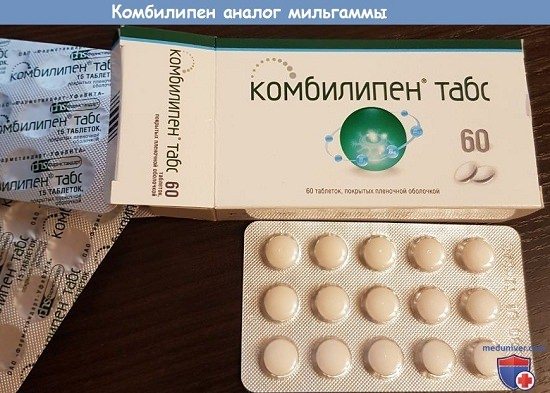
Cheaper analogues of milgamma
There are two analogues of milgamma on the market - neuromultivit and combilipen. The composition of all these drugs is similar - they contain the same vitamins. If combilipen contains the same dosages of vitamins as milgamma, then neuromultivit contains 2 times more vitamin B6 - pyridoxine hydrochloride.
At the same time, neuromultivit is produced in Austria and the price is even more expensive than the German milgamma. There is no reliable research that overpaying will lead to better results, so if you have a choice, don’t overpay! Moreover, Milgamma is the first and original drug.
Combilipen, which is produced by the domestic Pharmstandard, is a completely different matter. It will cost you 3-3.5 times cheaper than milgamma, both when purchased in injections and when purchased in ampoules. The composition of the drugs is similar. A pharmaceutical standard drug is registered in the required manner, so its production is controlled in the same way as the production of other drugs. Therefore, if you have no prejudices, you can save money - there is nothing wrong with that.
Source
With alcohol
Milgamma is prescribed after alcohol intoxication in order to restore the body. At the same time, alcohol and Milgamma, both in injections and tablets, should not be consumed.
Despite the fact that the compatibility of this medicine with alcohol is not described in the official instructions, such a combination completely neutralizes the positive effect of using the drug. Also, a number of side effects can be caused by combining alcohol and lidocaine , such as headache , drowsiness , and anxiety .
Analogs
If the original medicine is not available in pharmacies, it is allowed to use substitutes with similar therapeutic properties.
The most popular analogues:
- Combilipen - tablets for oral administration and a solution for parenteral administration, which contains not only pyridoxine and thiamine, but also cyanocobalamin, lidocaine. The product has more pronounced properties and relieves pain better than Milgamma, which is due to the presence of lidocaine in the composition. The drug is prescribed in courses of 2-4 weeks, depending on the severity of the manifestations, it is considered very effective.
Combilipen tablets
- Neuromultivit - tablets that contain thiamine, cyanocobalamin and pyridoxine. The product has pronounced properties, improves the conduction of nerve impulses to tissues, and prevents the progression of neurological diseases. The drug is taken orally for exacerbation of radiculitis, osteochondrosis and some other pathologies. The course of treatment is usually 2 weeks, but can be extended to 4-6 weeks if there is no therapeutic effect.
- Neurorubin - tablets and solution based on thiamine, cyanocobalamin, pyridoxine. The product stimulates tissue restoration, has anti-inflammatory properties, and improves blood circulation at the site of injury. Prescribed for neurological diseases, as well as for preventive purposes.
Analogues of the drug can only be used as prescribed by a doctor. It is not recommended to select them yourself.
Reviews about Milgamma
There are numerous reviews about Milgamma, which are left by both patients who have undergone such treatment and specialists. Reviews note that intramuscular injections are quite painful, and sometimes there is irritation at the site where the injection was administered. But more often a positive effect is described in the treatment of neuralgia , neuritis and other diseases that were noted after the patient was given injections of Milgamma. Reviews from doctors contain information that during treatment, patients must lead a correct lifestyle and follow all recommendations, since the remedy only eliminates the symptoms, but not the cause of the disease.
The effectiveness of the drug in complex therapy is also often noted, for which not only this drug is prescribed, but also other drugs. For example, a good effect can be obtained if Movalis and Milgamma are prescribed simultaneously. Movalis is a non-steroidal anti-inflammatory drug that has a pronounced positive effect on diseases of the musculoskeletal system.
Milgamma price, where to buy
The price of Milgamma injections No. 5 is on average 400 rubles. The price of Milgamma in ampoules injections No. 10 is from 600 to 700 rubles. The price of Milgamma injections (pack of 25 pieces) averages 1,500 rubles. You can buy Milgamma in Moscow (tablets, 30 pcs.) for an average of 700 rubles.
The cost of ampoules in Ukraine is about 150 hryvnia per pack of 5 pieces. How much the medicine costs in different packages should be found out at the specific point of sale. The drug in tablets (30 pieces) can be bought for an average of 350 hryvnia.
- Online pharmacies in RussiaRussia
- Online pharmacies in UkraineUkraine
- Online pharmacies in KazakhstanKazakhstan
ZdravCity
- Milgamma solution for intramuscular injection.
2ml 5 pcs. Vervag Pharma/Solupharm GmbH RUB 345 order - Milgamma solution for intramuscular injection. 2ml 10 pcs. Solyufarm GmbH
RUR 589 order
Pharmacy Dialogue
- Milgamma ampoules 2ml No. 5Worwag pharma
RUB 369 order
- Milgamma ampoules 2ml No. 10Worwag pharma
RUR 618 order
show more
Pharmacy24
- Milgamma 100 mg No. 30 tablets Mauermann-Artsnaimitel KG, Nimechchina
369 UAH.order - Milgamma 100 mg No. 60 tablets Mauermann-Artsnaimitel KG, Nimechchina
670 UAH. order
- Milgamma 2 ml No. 10 solution Solyufarm Pharmaceuticals Erzoignisse GmbH, Nimecchina
296 UAH. order
- Milgamma 2 ml No. 5 solution for injection Solyufarm Pharmaceuticals Herzoignisse GmbH, Nimecchina
146 UAH order
PaniPharmacy
- Milgamma ampoule Milgamma injection solution ampoules 2ml No. 5 Germany, Woerwag Pharma
191 UAH order
- Milgamma ampoule Milgama solution for injection. amp. 2 ml No. 10 Germany, Solupharm
289 UAH order
- Milgamma tablets Milgamma film-coated tablets No. 30 Germany, Mauermann-Arzneimittel
426 UAH order
- Milgamma tablets Milgamma film-coated tablets No. 60 Germany, Mauermann-Arzneimittel
767 UAH. order
show more
